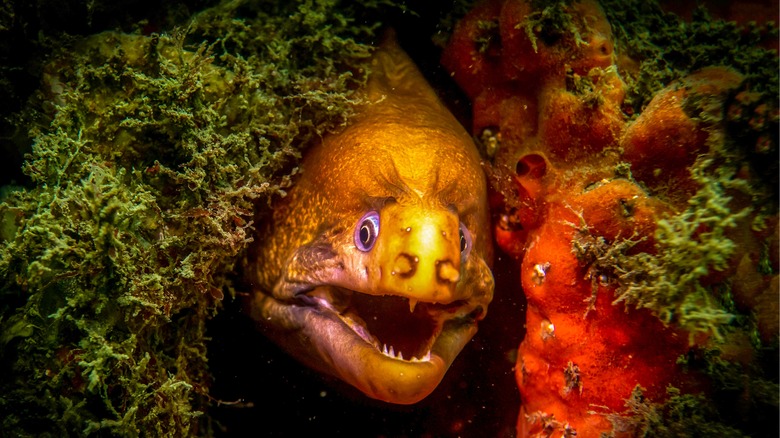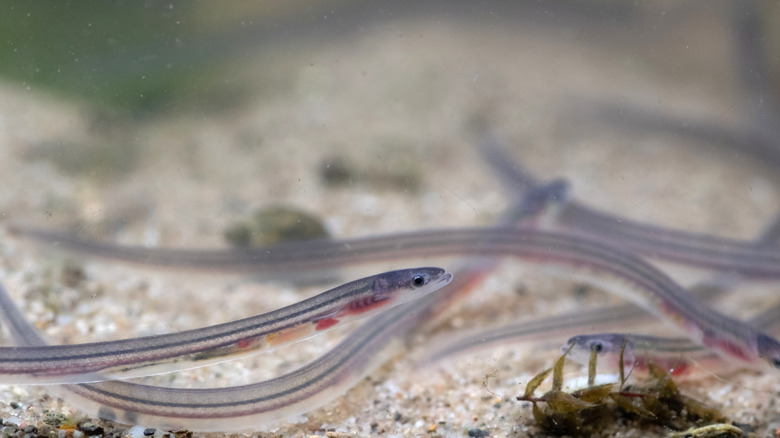Why Your American Eels Probably Grew Up In China
In 2014, Sara Rademaker launched her commercial-sized eel cultivation company American Unagi, the first of its kind in North America, according to a 2022 piece published by Eater. The problem it set out to solve was that most baby eels hatched in America had been shipped to China to be raised where transparency is all but non-existent. They were then exported back to the United States to be consumed by Americans. The severity of that problem becomes obvious when The Counter brings up the stat that 85% of the world's eel supply is produced in Chinese aquaculture farms.
"Some of them are legally harvested, some are illegally harvested; some are from fisheries that are managed, some are from fisheries that are not," Rademaker told Global Seafood in 2018. "There's that whole level of uncertainty. You just don't know what eel you're getting." Global Seafood noted that, a decade prior, 25% of seafood imported from China tested positive for drug residues. Presumably, running an eel farm that operates within the regulations set by the American government is more expensive than running one without such oversight. As such, the growing of authentic American eels still has not achieved a large market impact, despite the near decade that has elapsed.
Eel smuggling is serious money
The secrecy around eels grown in China extends beyond the worries of unregulated drugs. Over the years, smuggling with cash payments of $500,000 has become normal practice. The Counter explains that the popularity unagi began to enjoy in the 1970s meant that businesses had to look beyond Japan for product sourcing. Specifically, they turned to Europe and America.
In turn, European eels eventually became as rare as Japanese eels, and the European Union enacted a ban on all exports of glass eels in 2010. That didn't stop people from selling the eels, however. Fortunes have been made by this practice on the black market. In February 2020, a British man was caught in his attempt to ship 441 pounds of eels to Hong Kong. If he had succeeded, he could have made $7.4 million.
The same is true in Maine. National Geographic reported on fishermen charged with the illegal selling and trucking of eels during the federal government's Operation Broken Glass investigation. The cash hauls involved in the charges included $740,000, $150,000, and $1.9 million. Between China being the center of eel aquaculture, the lack of regulatory oversight those aquaculture facilities experience, and the sheer volume of money to be made by sending eels to Asia, it's almost certain that the American eel you're eating grew up in China.

